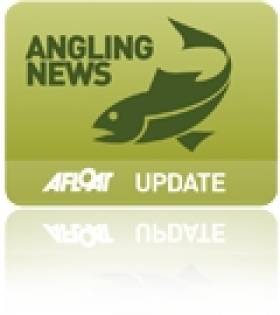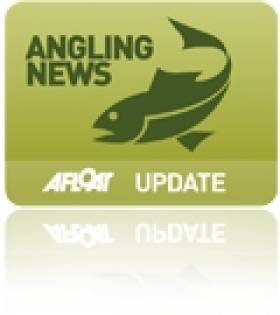Displaying items by tag: Darndale
Darndale Fishing Ponds Get New Lease of Life
#ANGLING - The Irish Times' angling columnist Derek Evans revisits the Darndale fishing ponds in north Dublin which have been given a new lease of life thanks to a community-led project to rid the angling spot of an invasive weed.
As reported last November on Afloat.ie, the public fishing ponds were "crying out for help" after an infestation of the invasive curly weed (Lagarosiphon major) which spread throughout the entire expanse of water, making casting virtually impossible.
But thanks to €3,000 in funding from the Heritage Council, the weed was smothered and killed off by jute matting (sackcloth) laid across the two ponds at the facility, restarting them to their former glory.
A 15-strong group including locals, anglers and members of Dublin City Council and Inland Fisheries Ireland spent three days in foul weather pulling out the weed and laying the jute.
The ponds, constructed in 1999 under the Urban Regeneration Programme, are home to good numbers of carp and rude, several of which "splashed and rose to fly-life and appeared to be enjoying their new surroundings" during Evans' visit.
It's hoped that the project will prove to be a success and lead to further works at public angling amenities elsewhere in Dublin, such as Bushy Park.
Life Choked Out of North Dublin Fishing Pond
#ANGLING - The public fishing pond at Darndale is "crying out for help" after an infestation of curly weed, The Irish Times reports.
A public meeting to discuss the issue recently heard that the invasive plant has spread throughout the entire pond, making casting all but impossible.
“We have a catchment of some 3,000 youngsters and adults who are deprived of fishing in their locality," said Brian Conneely of Sphere 17 Youth Service. "It’s a sad state of affairs.”
The meeting also heard of a possible solution to the problem, with Dr Joe Caffrey of Inland Fisheries Ireland suggesting a covering of jute or sacking to kill off the weed and allow the growth of native plants - a plan that appears to be working in Lough Corrib.
Costing is the issue, however, with such a jute priced at around €5,000. Maryann Harris of Dublin City Council's parks division said she was exploring grants to fund the project.
The Irish Times has more on the story HERE.

























































